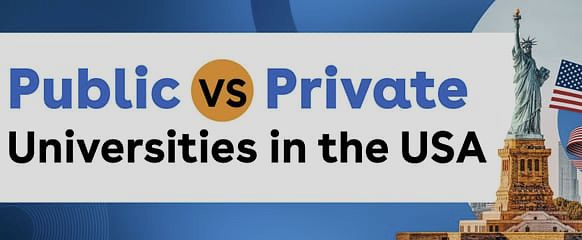Public Vs Private Universities in the USA: How to Pick the Right One?
Aug 01, 2025

With over 4,000 accredited higher education Institutions, the United States has long held the title of the world's most popular study destination. Whether you are drawn to Ivy League buildings, pioneering research labs, or lively multicultural campuses, the U.S. offers a University for every kind of learner. Having so many options to explore, most students get stuck on whether they should apply to a Public University or a Private one.
But, what’s the real difference beyond the price tag? Well, understanding the distinction between Public and Private Universities is not just about costs; it's about academic experience, campus life, faculty access, research scope, and career trajectory. In this article, we will help you comprehend the core differences, provide a list of the best Public and Private Universities in the USA, and offer insider tips to help you choose what’s best for your goals. So, grab your notepad and let’s decode the US University system.